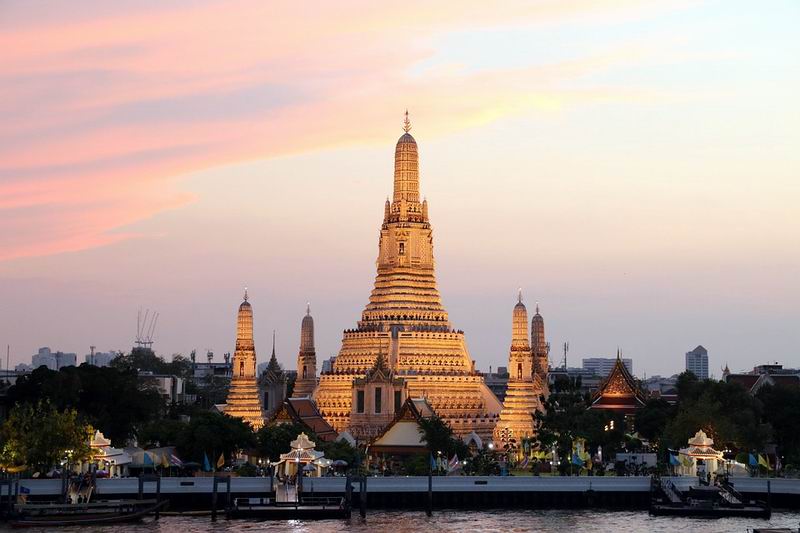The temple derives its name from the Hindu god Aruṇa, often personified as the radiations of the rising sun. Wat Arun is among the best known of Thailand’s landmarks.
The first light of the morning reflects off the surface of the temple with pearly iridescence. Although the temple has existed since at least the seventeenth century, its distinctive prang (spire) was built in the early nineteenth century during the reigns of Rama II and Rama III.
A Buddhist temple had existed at the site of Wat Arun since the time of the Ayutthaya Kingdom. It was then known as Wat Makok, after the village of Bang Makok in which it was built.
According to the historian Prince Damrong Rajanubhab, the temple was shown in French maps during the reign of Narai (1656–88). The temple was renamed Wat Chaeng by Taksin (1767–82) when he established his new capital of Thonburi near the temple, following the fall of Ayutthaya. It is believed that Taksin vowed to restore the temple after passing it at dawn.
The temple enshrined the Emerald Buddha image before it was transferred to Wat Phra Kaew on the river’s eastern bank in 1784.
The temple underwent major restorations during the reign of Chulalongkorn (Rama V, 1868–1910) and in 1980, prior to the bicentenary celebration of Bangkok’s foundation.


